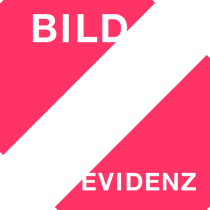Workshop der Kolleg-Forschergruppe BildEvidenz. Geschichte und Ästhetik mit Reindert Falkenburg (Abu Dhabi).
Berlin, 21.-22.07.2014
The central idea is to look at the notion of ‚BildEvidenz‘ from a dynamic point of view, of a trajectory that ends in the aesthetic sensation / experience of Bild-presence, but has a beginning in what is not-yet- evident. One could address the question, then, how relevant this notion of ‚unfolding evidence‘ (sich entfaltende Evidenz) is for, and in, late-medieval and early modern art forms – and perhaps in other (later) works as well. What are the medial strategies that produce a sensation of evidential dynamics in and through images? Is this flow ‚fluidly‘ or ‚pulsating‘ (as in a Rothko, or Veit Stoss’s Krakauer Retable)? What is the role of material and visual complexity, opaqueness, and density in ’slow-starting‘ this dynamic; what is the role, for example, of ornament and framing in ‚holding back‘ and gradually, or ‚pulsatingly,‘ releasing a sense of presence. Are there particular iconographic or religious/conceptual notions that underscore, carry, exemplify and help mobilize a sense of unfolding evidence? Can one think – particularly with regard to painted, and perhaps even more so sculpted / carved altarpieces – of this unfolding evidence as producing a sensation of ‚trans-presence‘ (‚Trans-Präsenz’), of a movement in the direction of the viewer that is produced by the image, projects beyond it (towards the viewer), and is then aesthetically folded back onto the very image (by viewer) producing this dynamic?


